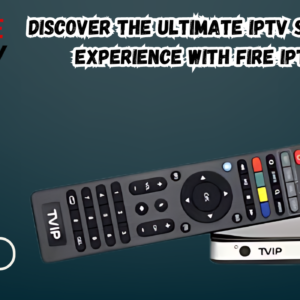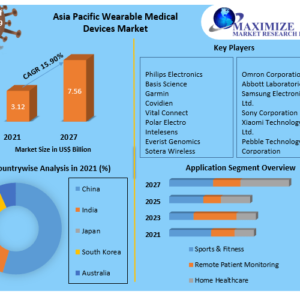While conducting research or even leading a research team in the IT field, you must be aware of the importance of your IT structure, as it determines the number of discoveries possible and the speed at which they are made. Advanced architectures unleash core computing power to analyze a continuous flow of information. It enables us to get insights that can be acted upon much faster.
As such, which IT infrastructure components should receive attention? You must select both the hardware and software with a lot of consideration while focusing primarily on your specific area of specialization. Ensuring that one has the right balance between processing might, flexibility, scalability and cost is critical.
This blog post outlines 12 critical components for boosting an IT research landscape to new levels of performance.
1. Processing Units: The Strength behind Discoveries
Processing units are the backbone of every analysis and simulation since they take the actual effort in doing all the computations. In their architecture, the number of cores and clock speeds determine pure power. Evaluate HPC infrastructure—microprocessors, graphics cards, programmable logic devices, etc.—for your tools.
Ensure they manage target data flows, algorithms and models effectively. It is possible to say that all the imaginable opportunities for IT to contribute to the faster advancement of humanity are limitless.
2. Memory and Storage Enhance Computing Speed
Here, large memory storage systems supply data to the multiple processing units, while local storage provides results with equal speed. Ensure that RAM and storage capabilities are adequate for future volumes that are expected to be processed. Another thing that helps in building the storage tiers is the speed of the storage. Consider that data will grow in the future in direct proportion to the exponential growth paradigm.
3. Cluster Architecture for Automation
A high-speed, low-latency network Glue connects islands of computational capabilities into a tightly coupled supersystem. For HPC infrastructure clusters, Infiniband and OmniPath are much faster; otherwise, Ethernet is sufficient. Use RDMA for one-sided communication in parallel computing for high-performance computing.
4. Orchestration Software
Complex workloads often involve multiple processes that require a significant amount of memory or time to complete efficiently, especially when they are executed at the same time. These are workload managers and they include slurm, kubernetes and mesos, which help in the management of resource sharing between users and projects.
They abstract cluster complexity, schedule jobs optimally, and consider failure a normal occurrence. When choosing the software for your organization, ensure that it meets your needs, depending on your type of usage.
5. Containerization: Portable, Efficient Environments
Place your entire software stack into a slim container like Docker or Singularity. Deliver it seamlessly across any infrastructure using container runtimes. This reduces dependencies and allows the code to be moved seamlessly from one system to another.
6. Configuration Management
Working for a starting point is consistency across chaos. Current solutions for IT infrastructure as code also enable administrators to manage large-scale servers consistently. Master scripts should be set to define the desired end state and auto-configure deployments wherever possible. This saves administrators time and effort, as it reduces the common issue of configuration drift.
7. Monitoring: Stay Alert of Health
It is important that people stay aware of their health at all times because nobody knows when a disease or a sickness may be around the corner and strike. Proactive monitoring, on the other hand, helps keep track of the resources’ utilization, performance problems, and outages.
Modern time series databases, like InfluxDB, come with analytics visualization tools like Grafana. Every day, clusters that some companies use for their applications produce terabytes of logs, and log aggregation systems such as the Elastic stack assist in sorting through them.
8. Security: Guard Access Diligently
HPC IT infrastructure ingress and egress points can be considered as the initial and final points where the attack takes place. Use firewalls, DMZ Zones, VPN’s, RBAC and IPS to protect environments. Plan penetration tests over time and use them to also check on the existing defenses.
9. Power and Cooling: Power to the Compute
HPC hardware power and cooling depend on flops, with power proportional to electrical energy consumed and heat dissipation. Ensure that the power budgets are effectively planned during the planning process so as to include redundancy feeds and generators for backup purposes. Cooling down the dimension and the IT infrastructure toward the projected thermal load. Prioritize energy-efficient hardware.
10. Smart Networking: Faster Co-creations
It is important to make sure that, irrespective of the geographical location, the researchers are able to cooperate effectively. Use technologies that would enable setting up meetings over phone, sharing screens, messaging and video calling. Support all teams working at different sites to function as one by enabling site-to-site connectivity.
11. Cloud Bursting: Elastic Capacity
The problem with on-premises, which is sized for average utilization, is that it can easily get overloaded during peak hours. Cloud platforms support people in breaking the ceilings, providing an opportunity to rent convenient additional capacity. Determine which workloads should be migrated to the cloud for a short period when the demand is high to avoid interfering with the efficiency of operations.
12. Future Planning: Aim for Growth and Keep Some Free Headroom for the Future
HPC infrastructure Technology progresses relentlessly. Year by year, costs are reduced while the capability of an enterprise is strengthened. When incorporating original plan with additional space, there is always the leeway for future enhancements. Spend a little extra today to provide ample power and cooling to gain more in the future. Untimely refresh cycles have also been found to enhance growth over time.
Build Resilience in the New Economy with Smart IT Investments
The management has the critical responsibility of aligning infrastructure to current demands by investing selectively while incorporating advanced technologies. It is advisable to always check the environment against existing needs every now and then to avoid deterioration of the environment. Innovate disruptive technologies that are effective, safe, and sustainable to unlock new paradigms. With each successive enhancement, help your researchers extend their innovative efforts even beyond.




